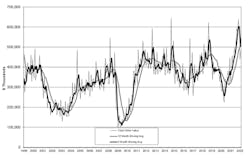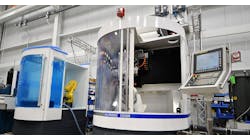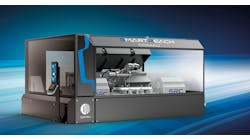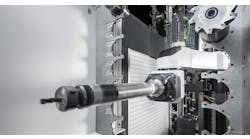U.S. manufacturers ordered $479.3 million worth of machine tools during February, an 8.9% rise over January’s order value and a 27.1% increase over the February 2021 figure. Comparing two months of machine-tool new orders, machine shops and other manufacturers’ capital investments are 30.4% higher than the comparable 2021 total.
The $919.46 million year-to-date increase in order values compared to January-February 2021 represent the highest total for that period since 1998.
“The industry seems to be carrying the momentum of 2021 into the beginning of 2022, recording the best start to the year in over two decades,” according to Douglas K. Woods, president of AMT – the Assn. for Manufacturing Technology. AMT compiles the monthly U.S. Manufacturing Technology Orders report, from which the new-orders data is sourced.
The U.S. Manufacturing Technology Orders (USMTO) report compiles nationwide and regional data of new orders for metal-cutting and metal-forming and -fabricating machinery. USMTO totals – presented in actual dollar values – serve as a forward-looking indicator of overall manufacturing activity, as machine shops and other manufacturers make capital investments in preparation for demand expected in the weeks and months ahead.The regional data for February new orders show particularly strong demand in the South Central (+44.3%), West (+22.2%), and North Central-West (+20.2%) regions, and positive growth in the Northeast (+12.0%) and Southeast (+9.1%) regions. Only the North Central-East region posted negative demand (-16.4%) growth during February.
The North Central-East also was the only region to post negative (-19.9%) year-over-year growth in new machine-tool demand,
AMT explained that rising machine-tool orders in recent months have been driven by strong consumer demand, but Woods noted that, “despite waning consumer sentiment and predictions that spending would soon shift back to services, demand for manufactured products remains at historic levels.”
Inflation and ongoing geopolitical events present threatens to undermine consumer demand – and thus present obstacles to ongoing USMTO growth.
“As we have learned throughout the last two years and, especially the last few months, conditions can change quickly,” Woods continued. “We saw this in 2021 when order values during the first few months of the year performed only moderately well, but by the end of 2021 it was the best year on record. This can cut both ways so we may need to temper the early 2022 excitement as conditions on the ground change.”
He also noted that previously highlighted problems, namely worker shortages and supply-chain disruptions, “but inflation is becoming the biggest threat the manufacturing industry has seen since the initial shutdowns two years ago,” said Woods.
“The aggressive posture taken by the Federal Reserve in their last meeting is really telling,” he concluded. “Inflation needs to be controlled, but for interest rate-sensitive activities like capital investment, the medicine may be a tough pill to swallow.”







